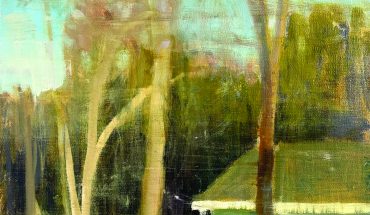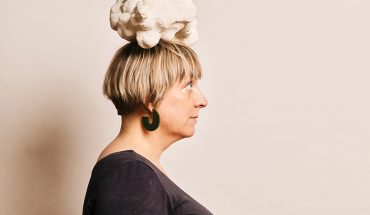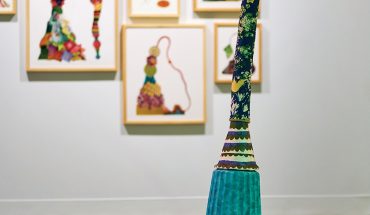Known for her work in textiles and weaving, this Raleigh artist is exploring a surprising new medium.
by Colony Little | Photography by Joshua Steadman
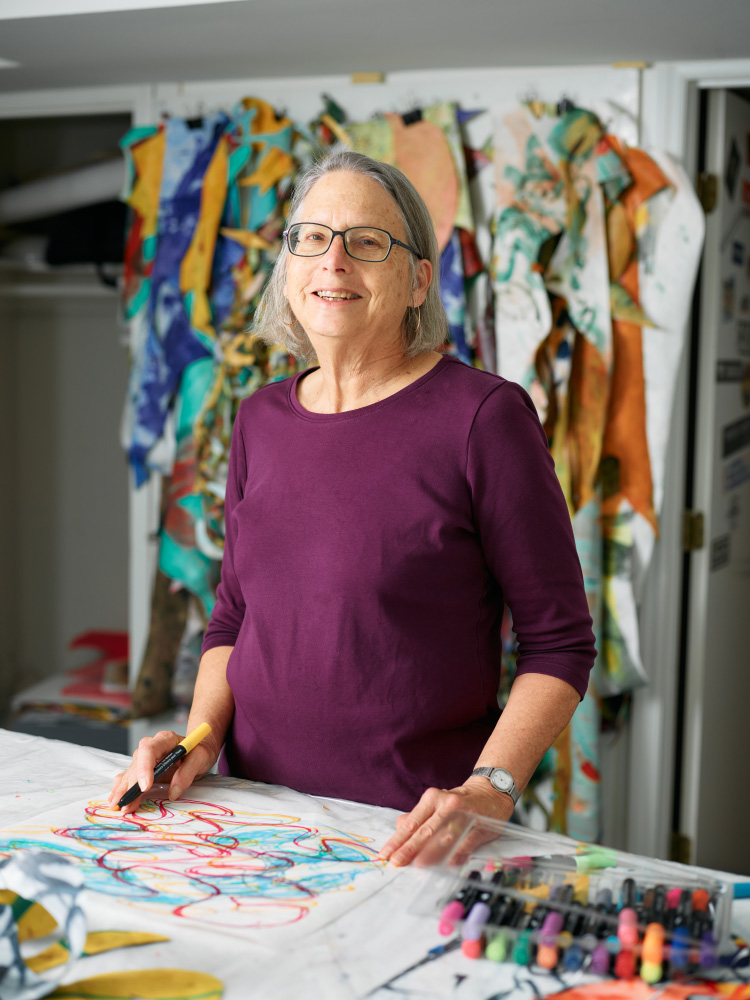
In 2018, textile artist Ann Roth made an unusual New Year’s resolution: “No straight lines and no right angles.” For an artist who spent the majority of her career on a loom, where the symmetry of weaving leaves little room for error, this was a radical departure from her previous work.
Roth made a name for herself by dyeing and weaving vibrant wall hangings, playing with the colors in the warp and weft — the interaction between the vertical and horizontal yarns — as they wove over and under each other to create intricate, layered patterns. She had success in this medium, with solo shows at the Gregg Museum of Art & Design as well as through the Wilson Arts Council, and she displayed work at juried shows across the United States. But she started to feel confined. “It takes so long to weave that you can’t experiment as you’re working,” she says. “It began to feel like I was cooking with a recipe.”
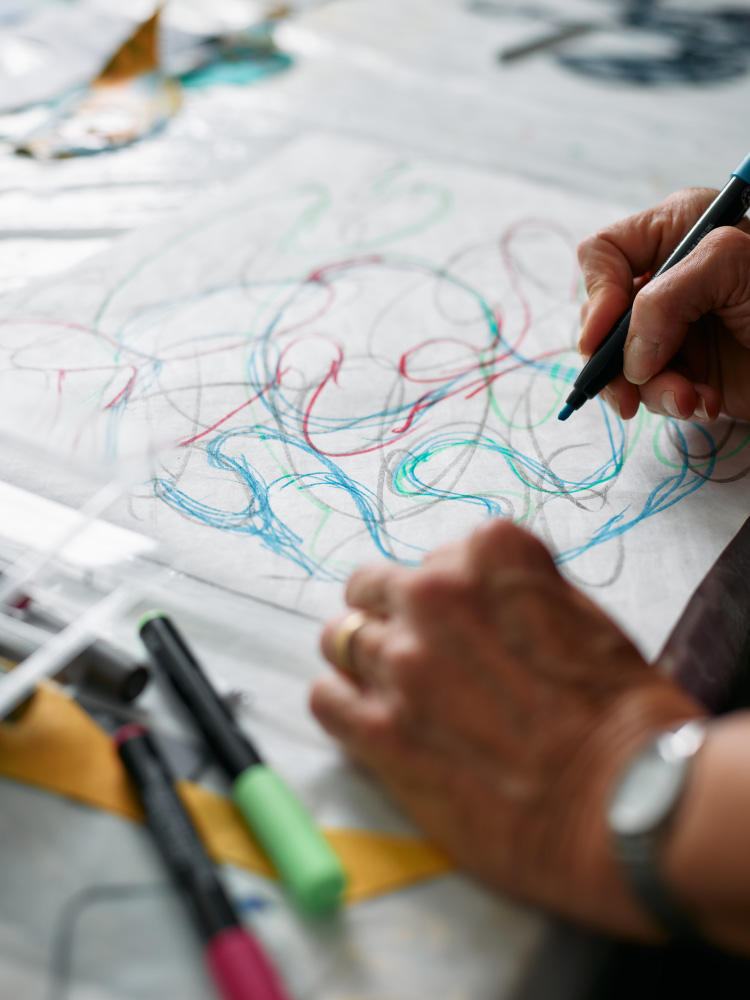
Her first step toward keeping her resolution was to create some space in her studio, a modest room within her home. She loaned her loom to one of her former students at Meredith College, where she taught between 2001 and 2014, which cleared up some physical space. And once she was free from the constraints of the studio equipment, she found the mental space to explore a creative path that was more suited to the joys of discovery. Amid a break from the yarns and calculated over-unders of her weavings, Roth found herself leaning toward more organic shapes inspired by ocean waves and verdant gardens.
At first, she experimented with new methods and materials that mirrored the motifs found in her woven work. “I was painting pieces of bristol board and cutting them into quarter-inch strips and weaving them together to try to emulate the ikat,” she says, referencing the traditional Indonesian textile patterning that she often featured in her woven pieces. “I was continuing to play with optical color mixing — you’ve got one color on the warp and one color on the weft and when they intersect they make a new color.” But as her process evolved, she disconnected from the weaving. “I thought, I’m not going to do strips, I can follow these paths that I’ve woven — that’s when I started cutting things apart,” Roth says.
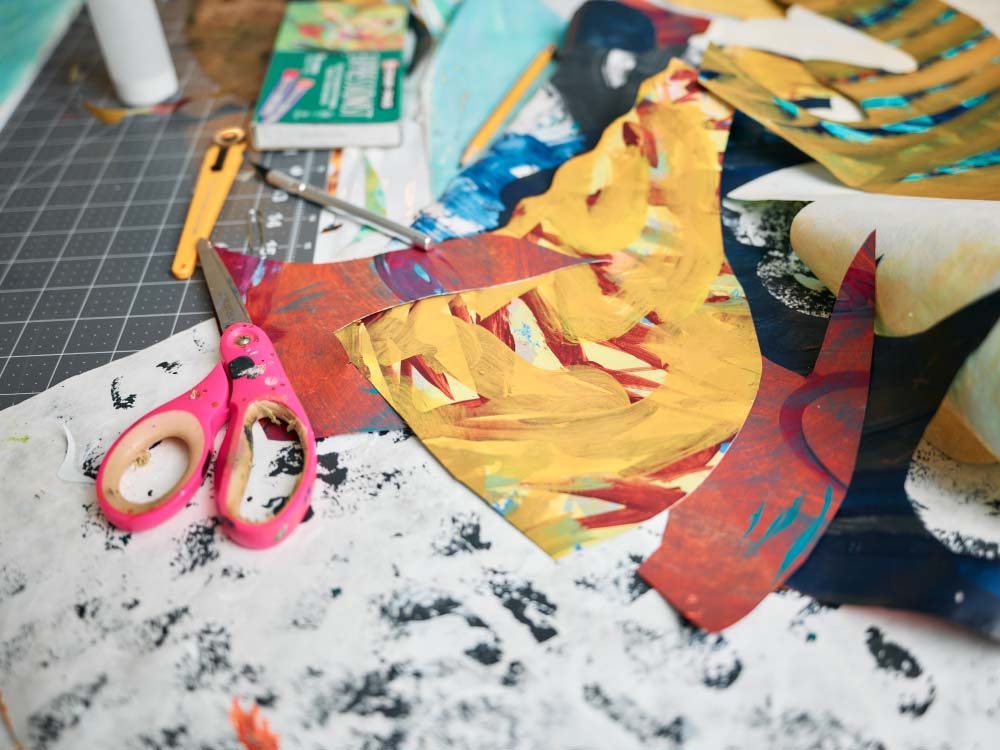
A surprising material, Tyvek, became her new canvas. Often found in construction projects, this waterproof, flexible nonwoven material bridges the space between paper and fabric, with the heft to hold a form and a bright white surface begging for color. Roth paints both sides of the material in various patterns and hues, then cuts it into curved strips that she weaves by hand into interlocking shapes or lets hang free. The lightness of the Tyvek allows her new practice to take on larger, more sculptural shapes — moving from her two-dimensional weavings into 3D forms.
Her early experiments in the medium recalled the overlapping shapes of her textile days. This new, more fluid expression radically changed the artistic direction of her work, and over the last few years her pieces have become larger and more dimensional, popping off walls or suspended from ceilings. Her work changes constantly — scraps from previous weavings make their way into new ones in an organic process. For the cover she created for this issue, she used both new pieces and ones left over from previous work to create Sir Walter Raleigh’s vibrant portrait.
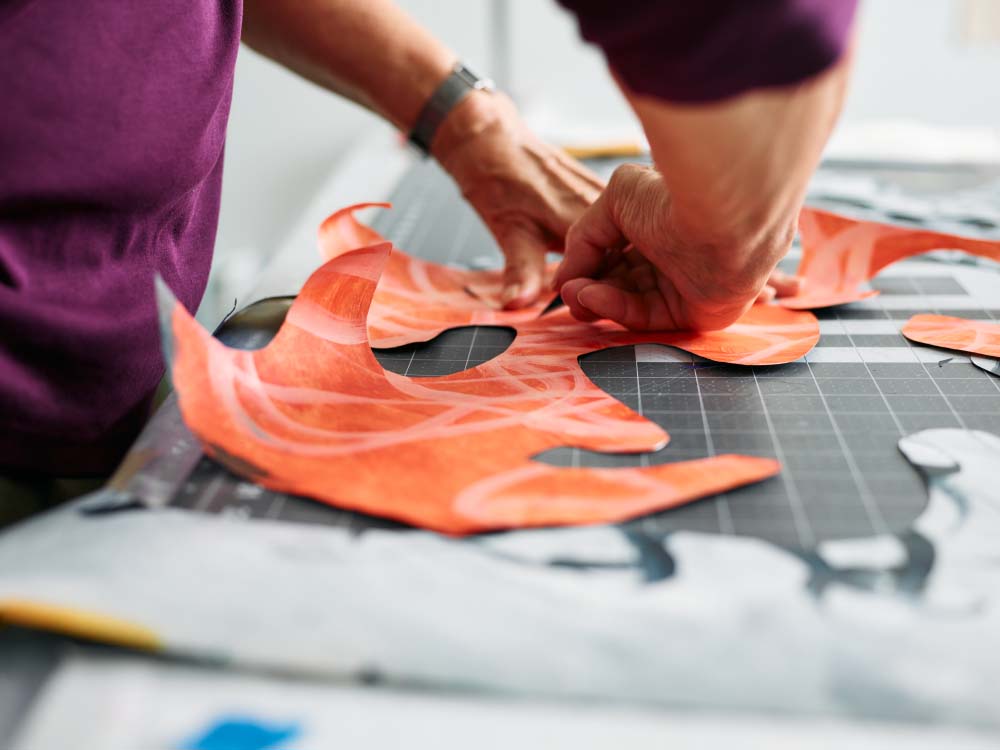
In January 2021, she completed an installation at the Village Library called Leap. The large-scale piece consists of three separate panels, which were suspended from the library atrium. The colors and patterns revealed themselves in different ways depending on the perspective the piece was viewed from. One side showed various shades of green, from deep forest hues to softer, mossy ones, while the other side resembled the explosive patterns and colors in a kaleidoscope ranging from persimmon, pink, turquoise, and cobalt blue.
Roth created Leap during the turbulent summer months of 2020. The colors woven together represent ideas and people coming together, while the green represents growth. “I’m not taking on social issues directly, specifically, or literally,” says Roth. “I’ve always seen the world abstractly as patterns and colors.”
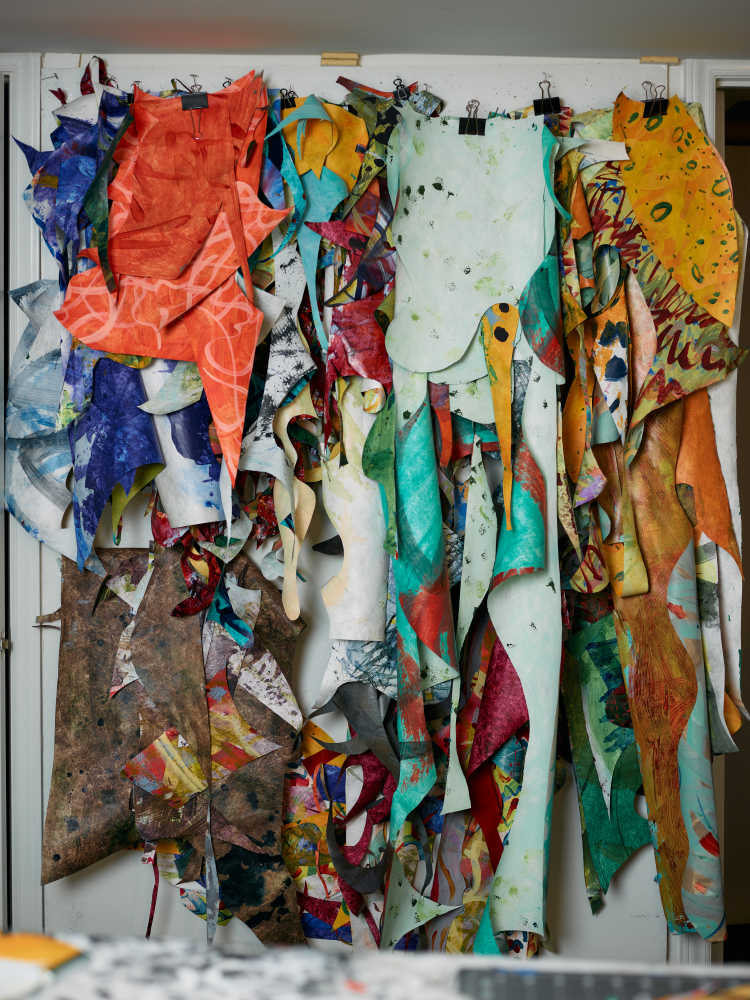
While her eye is in abstraction, she also grounds her work in the meditative and contemplative characteristics of her process and the viewer’s experience with the work. “I’m hoping that art is a way to bring people together,” she says.
In December, Roth reinstalled Leap at Wiley Magnet Elementary School, where it is currently on view. Her work in Tyvek has also been displayed on the walls at Cup A Joe on Hillsborough Street, and she was one of the first artists on exhibit at the newly reopened Pullen Arts Center.
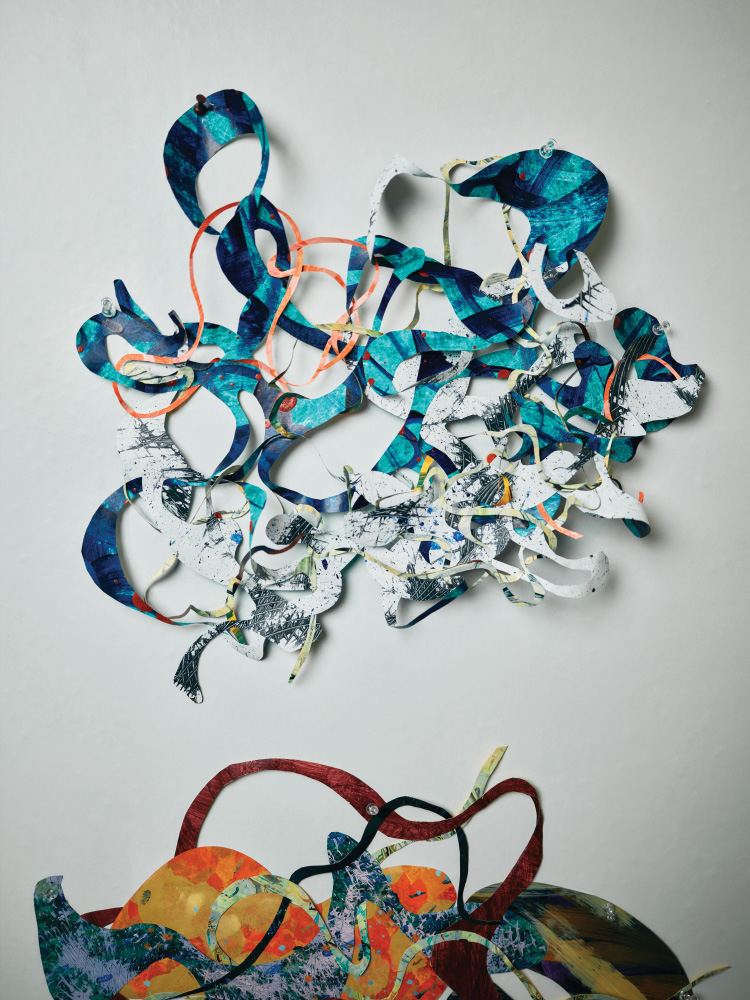
In many ways, Leap is her magnum opus. It personifies Roth’s bold decision to part ways with her loom to venture into new artistic territory. But after four years working in Tyvek, she just might reconsider textiles. “I’m kind of ready for a new change,” Roth says. “I still want to deal in color, but there is something that’s calling me about making more fabric.”
It’s an approach towards change that encourages others to embrace the unknown with both courage and grace. “My journey was slower than others, but lots of great things have occurred along the way,” she says. “We need to feel good about doing things in our own time and our own pace.”
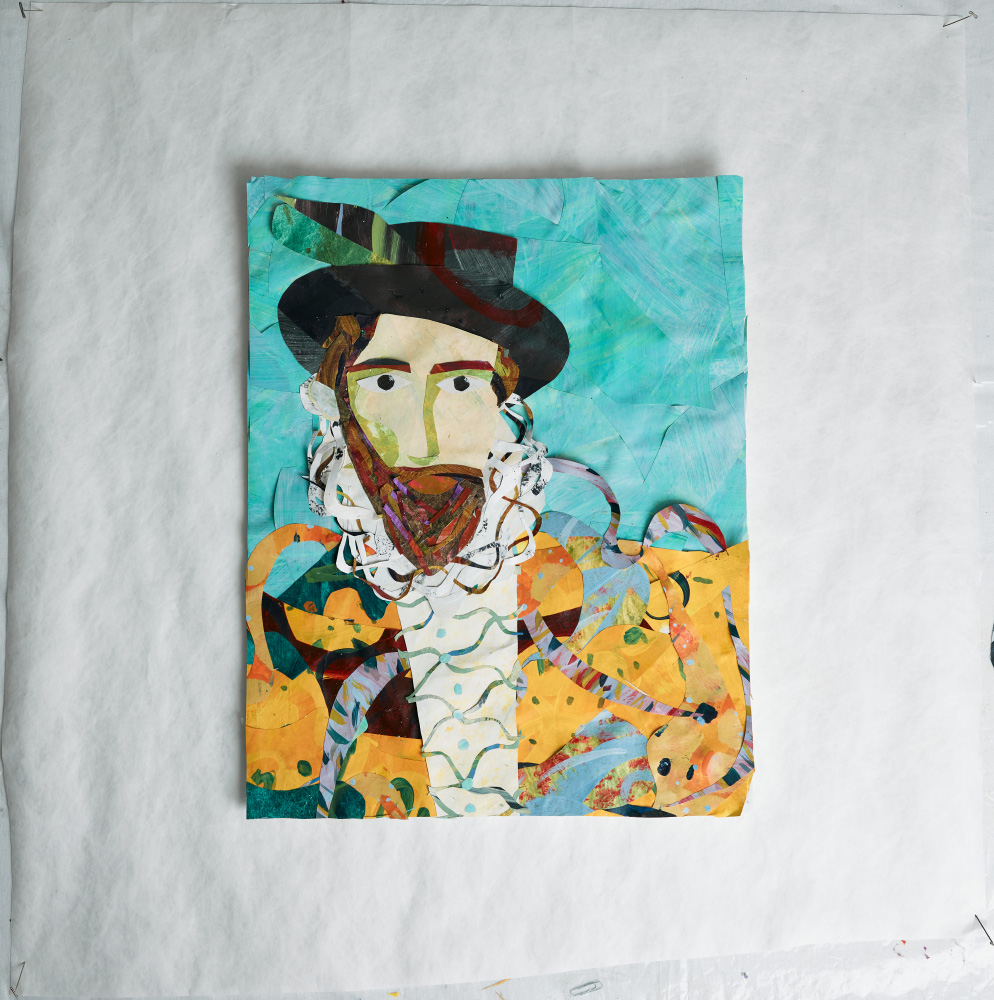
__
This article originally appeared in the January 2022 issue of WALTER magazine.

